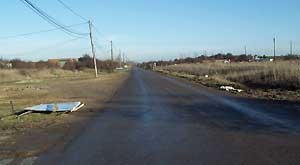
Elstow Storage Depot - Elstow Garden Villages
During the Second World War the Elstow Storage Depot was developed as a storage and manufacture depot for armaments. Between 1942 and 1945 it was one of the country's largest and most secret bomb-making factories with six million bombs being made at the factory in little over two years. At the height of the war over 2,000 people were employed on the site, which operated 24 hours a day, seven days a week. After the war the bomb filling stopped and the site was taken over by the Central Electricity Generating Board, later known as National Power, who had a number of ideas for the site. In the early eighties Nirex put forward plans to develop the site as a low-level nuclear waste storage depot. The local community vigorously opposed the plans and in 1987 it was decided that the land wasn't suitable as a repository for nuclear waste and the plans were dropped. In recent times, the depot has been used by a variety of more than thirty small businesses.
During the Second World War the Elstow Storage Depot was developed as a storage and manufacture depot for armaments. Between 1942 and 1945 it was one of the country's largest and most secret bomb-making factories with six million bombs being made at the factory in little over two years. At the height of the war over 2,000 people were employed on the site, which operated 24 hours a day, seven days a week. After the war the bomb filling stopped and the site was taken over by the Central Electricity Generating Board, later known as National Power, who had a number of ideas for the site. In the early eighties Nirex put forward plans to develop the site as a low-level nuclear waste storage depot. The local community vigorously opposed the plans and in 1987 it was decided that the land wasn't suitable as a repository for nuclear waste and the plans were dropped. In recent times, the depot has been used by a variety of more than thirty small businesses.



It is planned that development will start in January 2002.
